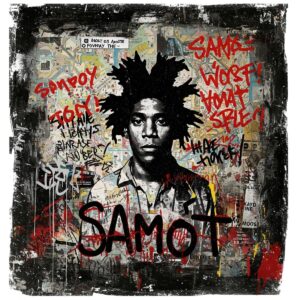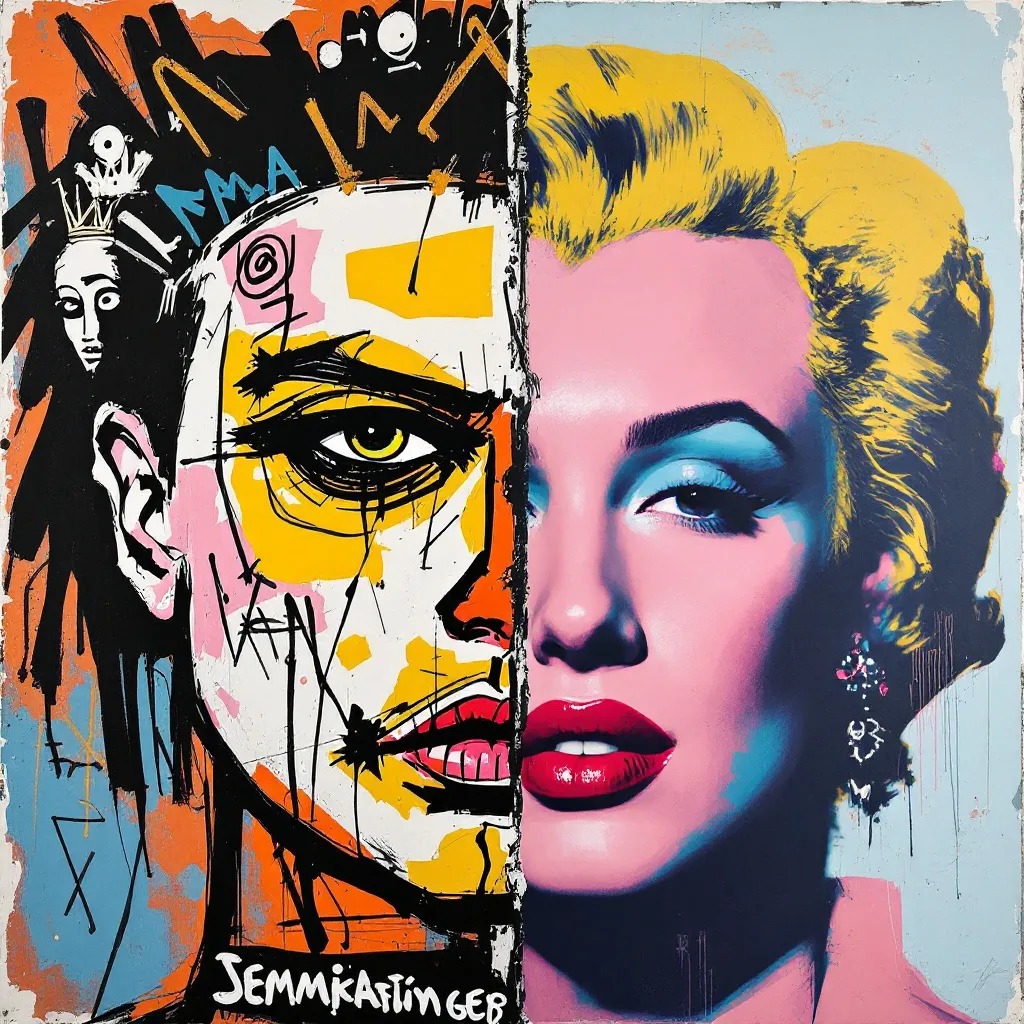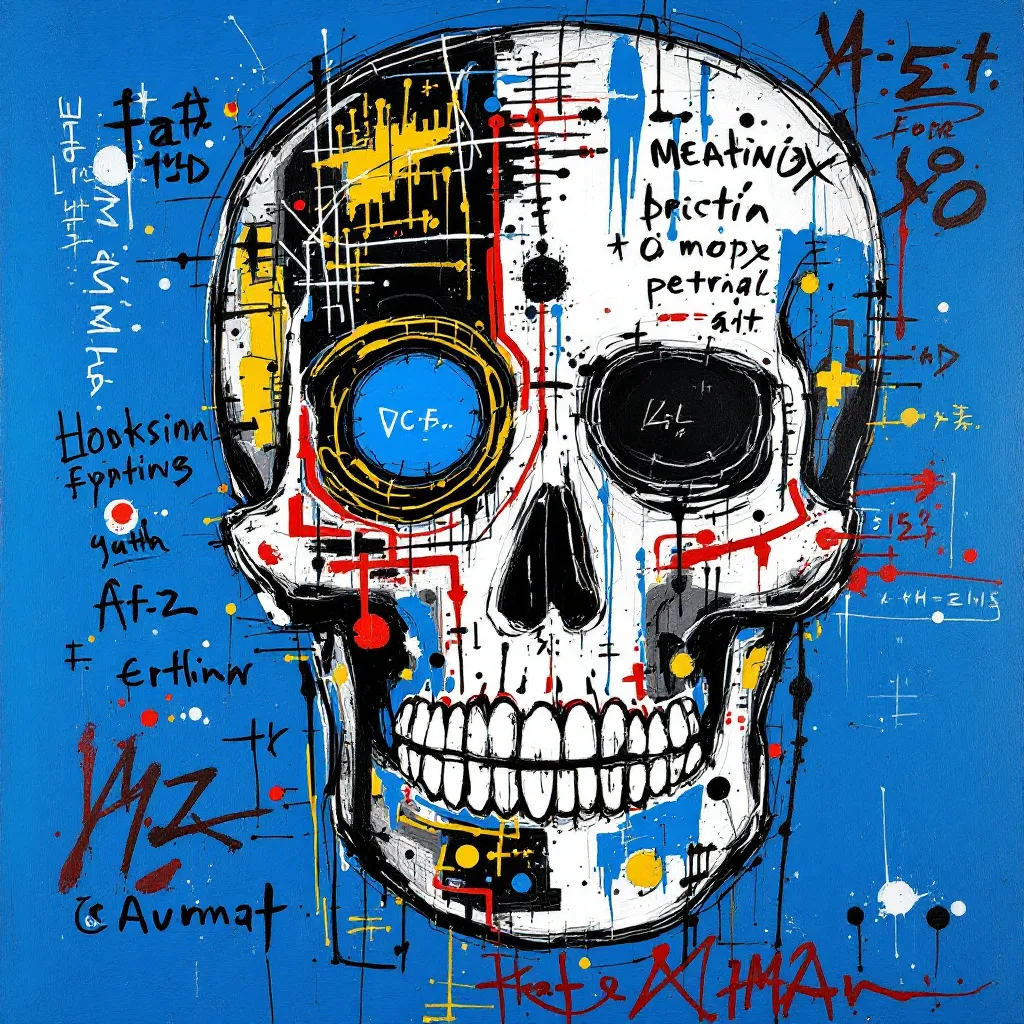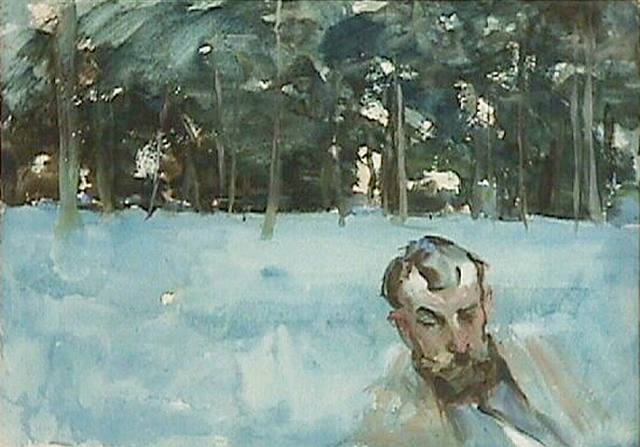Jean-Michel Basquiat’s art exploded onto the New York scene in the late 1970s with a raw energy that challenged the art world. Using a unique mix of graffiti-inspired techniques, primitive symbols, and thought-provoking text, Basquiat created basquiat art that spoke to both the streets and elite galleries. His dynamic paintings addressed racism, power struggles, and cultural identity through a visual language entirely his own. Though his career lasted just a decade before his tragic death at 27, Basquiat’s artistic legacy continues to inspire artists worldwide and command record-breaking prices at auctions.
Key Points:
- Basquiat began as a street artist under the tag SAMO before transitioning to gallery work
- His neo-expressionist style combined text, symbols, anatomy, and vibrant colors
- Recurring motifs include crowns, skulls, and anatomical drawings
- His work addressed Black identity, racism, and social commentary
- Basquiat collaborated with Andy Warhol and other prominent artists
- His paintings now sell for tens of millions of dollars
The Evolution of Basquiat Art
To view originals of his style and artwork: visit here

Born in Brooklyn to Haitian and Puerto Rican parents, Basquiat’s artistic journey began on the streets of New York. Before becoming a gallery sensation, he gained attention through his graffiti work under the tag “SAMO©” (Same Old Shit), which he created with friend Al Diaz. These early street works featured poetic, cryptic messages that commented on society, racism, and commercialism.
By the early 1980s, Basquiat had transitioned from walls to canvases, but his work retained that urgent, street-influenced aesthetic. His paintings resonated with both the downtown NYC art scene and major galleries, bridging what seemed like unbridgeable worlds.
As art expert and critic Robert Hughes notes: “Basquiat’s canvases are a form of continuous talking, a conversation that the artist is having with himself about his experience of the world.“
Understanding Neo-Expressionism Through Basquiat

Neo-expressionism emerged in the late 1970s as a reaction against the coolness of minimalism and conceptual art. Basquiat became one of its most important figures, alongside artists like Julian Schnabel and David Salle.
What made basquiat art stand out within this movement was its unique combination of:
- Primitive, childlike imagery
- Raw, unpolished aesthetics
- Intense emotional content
- Cultural and historical references
- Social critique
- Personal mythology
His work shared similarities with other 20th-century art movements, particularly in its expressiveness, but Basquiat created something entirely his own.
The Symbolic Language of Basquiat’s Work
Basquiat developed a rich vocabulary of symbols and motifs that recur throughout his work. Understanding these elements helps decode the meaning behind his seemingly chaotic compositions:
| Symbol | Meaning in Basquiat’s Work |
|---|---|
| Crown | Signifies power, dignity, and Basquiat’s elevation of Black figures to royalty status |
| Skull | Represents mortality and references Basquiat’s interest in anatomy |
| Copyright symbol (©) | Critiques commercialism and ownership |
| Crossed-out text | Creates tension between revealing and concealing meaning |
| Anatomical drawings | Shows the interior and exterior simultaneously, suggesting hidden truths |
| Lists and diagrams | References encyclopedic knowledge and systems of classification |
These symbols weren’t just decorative—they formed the basis of Basquiat’s visual language, allowing him to communicate complex ideas about race, power, and identity.
SAMO and Street Art Influences

Before gallery fame, Basquiat made his mark on New York City walls with his friend Al Diaz. Their SAMO© tag became recognized for poetic, cryptic messages that commented on society, commercialism, and racism. This graffiti foundation remained vital to his later canvas work.
The transition from street to gallery never erased the raw energy of Basquiat’s early style. As he told an interviewer: “SAMO was just a way to get known, to get attention. It was just one of the things that I did when I was growing up to get my name out there.”
Looking at Basquiat’s work in the context of street art’s broader evolution, we can see how he helped elevate street aesthetics to fine art status, paving the way for artists like Banksy and Shepard Fairey.
Basquiat and Andy Warhol: A Creative Dialogue
One of the most fascinating chapters in Basquiat’s career was his collaboration with Pop Art master Andy Warhol. Their friendship and artistic partnership produced a series of works that combined Warhol’s cool, commercial sensibility with Basquiat’s raw expressionism.
The collaboration benefited both artists:

- Warhol found renewed creative energy through Basquiat’s spontaneity
- Basquiat gained access to Warhol’s network and institutional credibility
- Together they created a unique visual dialogue between different artistic approaches
Though critics were initially harsh on their collaborative works, today these paintings are recognized as important examples of artistic cross-pollination. The Basquiat-Warhol connection represents a fascinating bridge between different art movements and generations.
For more on artistic collaborations throughout history, check out this comprehensive guide to art mediums.
Addressing Black Identity and Experience

Perhaps the most powerful aspect of basquiat art is its unflinching examination of Black identity and history in America. As a Black artist navigating predominantly white institutions, Basquiat created work that celebrated Black excellence while exposing systemic racism.
His paintings often feature:
- Black historical figures elevated to iconic status
- References to the African diaspora and its cultural contributions
- Critiques of ongoing discrimination and exploitation
- Explorations of his own complex cultural identity
As curator Chaédria LaBouvier explains: “Basquiat was making work about Black subjectivity, Black masculinity, and Black humanity at a time when that wasn’t what was being shown in galleries.”
This aspect of his work connects to broader conversations about cultural fusion in art and continues to resonate with contemporary discussions about representation.
The Basquiat Market: Record-Breaking Value
Basquiat’s artistic value has skyrocketed since his death in 1988. In 2017, his painting “Untitled” (1982) sold for $110.5 million at Sotheby’s, setting a record for any American artist at auction.
What makes basquiat art so valuable in today’s market?
- Limited supply (he produced around 1,000 paintings in his short career)
- Increasing recognition of his artistic importance
- Growing interest in Black artists and art addressing racial issues
- Appeal to both traditional collectors and new cultural figures
- His iconic status in both fine art and popular culture
For more on what drives prices in the art world, see this detailed analysis of what makes paintings valuable.
Basquiat’s Enduring Legacy
“I don’t think about art when I’m working. I try to think about life.”
Jean-Michel Basquiat
The impact of basquiat art extends far beyond auction prices. His influence can be seen in:
- Contemporary street art and graffiti
- Hip-hop culture and fashion
- Political art addressing racial inequality
- The broader acceptance of outsider art in institutions
- The breaking down of barriers between “high” and “low” art
His work reminds us that powerful art often emerges from the margins, challenging established systems and creating new possibilities for expression.
For a deeper understanding of how rebellious artists change art history, check out this article on rebellious art.
Jean-Michel Basquiat created basquiat art that continues to resonate with viewers decades after his death. By combining street art energy with deep intellectual content, he created a body of work that challenges us to consider issues of race, power, and cultural identity that remain urgently relevant today. His artistic journey—from Brooklyn streets to international fame—represents both the possibilities and pitfalls of the art world, while his distinctive visual language has become an indelible part of our cultural landscape.
FAQ: Jean-Michel Basquiat
Who owns Basquiat paintings now?
Basquiat’s works are owned by various private collectors, museums, and cultural institutions. Notable collectors include Japanese billionaire Yusaku Maezawa (who purchased “Untitled” for $110.5 million), celebrities like Jay-Z and Leonardo DiCaprio, and institutions like the Museum of Modern Art and the Whitney Museum of American Art.
Why is Basquiat art so expensive?
Basquiat’s art commands high prices due to his significant cultural impact, limited body of work (he died young), growing recognition of his artistic importance, increased interest in Black artists, and his crossover appeal to both traditional art collectors and figures from entertainment and fashion.
How did Jean-Michel Basquiat die?
Basquiat died on August 12, 1988, at age 27 from a heroin overdose in his studio in Manhattan. His death came after struggles with substance abuse that had intensified following Andy Warhol’s death in 1987.
What influenced Basquiat’s painting techniques?
Basquiat was influenced by a diverse range of sources: graffiti and street art, abstract expressionism, pop art, anatomical drawings, African art, Caribbean culture, jazz music, and television. He often worked with acrylic, oil paintsticks, and marker on various surfaces, frequently incorporating collage elements.
What was Basquiat’s relationship with Andy Warhol?
Basquiat and Warhol had a complex relationship that was both personal and professional. They met in 1982, became friends, and later collaborated on numerous paintings between 1984-86. Warhol served as a mentor figure to Basquiat, while Basquiat helped reinvigorate Warhol’s creative practice. Their relationship cooled somewhat after a poorly received joint exhibition, and ended with Warhol’s unexpected death in 1987.



